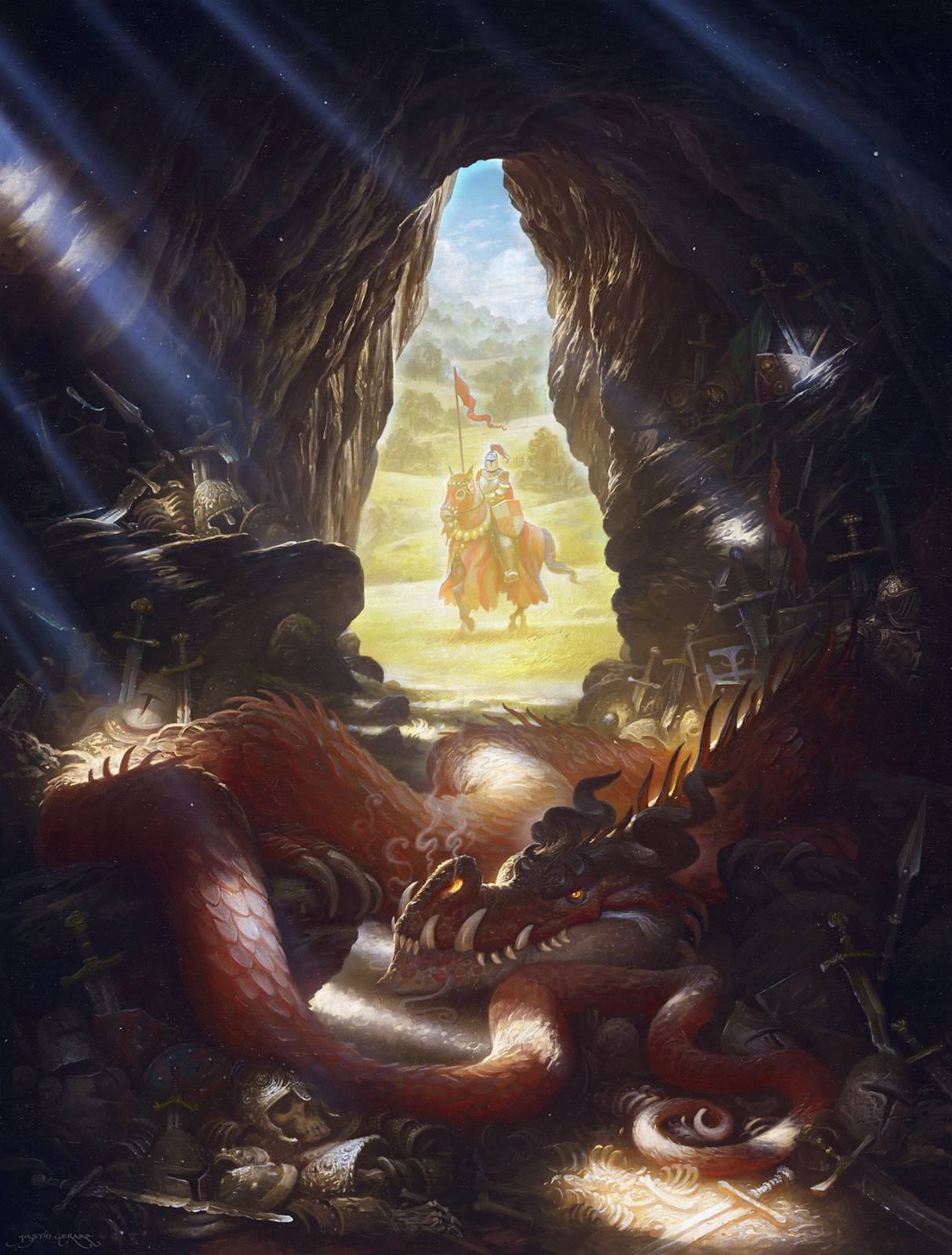
Welcome to Part II of “The Lair of the Firebreather.” If you missed Part I, you can check it out here. I had initially meant to write an in-depth post on the making of this image from underpainting to final color; but in truth, this image almost didn’t make it. At one point I doused it in lighter fluid and if I had only been able to find a matchbook I would have burned it in the street while shaking my fists at the sky. So it would seem wrong and disingenuous to offer up a tutorial from an image where my steps had failed me so badly. A bit like Napoleon giving you advice on how to invade Russia in winter. Thanks for the advice bud, I think I’ll just not get involved in a land war in Asia to begin with.
I didn’t even bother to save my middle stages because they were a train wreck of radioactive waste and rotten vegetables. What kept me going was both my sincere interest in the scene, and how exciting the original drawings made me. They just worked so well. So, why was the painting such a mess?
But that was it! I had gotten away from my drawing. I had gotten caught up in trying to perfectly recreate my photo-reference in an effort to capture rocks and scales. And the fun of the image had gotten away from me as it was drained of blood.
I hate back-tracking. (Ask anyone who’s ever driven with me. I’ll drive a hundred miles to see if we can get there from here before turning around to find the road we missed.) But I did the right thing here (for once) : I ordered a dumpster and threw away my reference, my color comp, my easel, both my cats, and got back to work using only my drawing as a guide. And it all started to click again. After a few revisions I found what had initially made me so excited about the image, and it ended up being one of the most fun I’ve worked on in a long time. I couldn’t put it down, and I found myself being excited about adding new details again. (What if there were just one more curling tendril of smoke? What if we added a bit more blue cast to the light? What if this sword were bronze? Ooooo… that makes it seem like maybe this dragon had been cooking warriors back before it was even cool!)
Perhaps there are some lessons to share here: Number One: Don’t quit. Go back and find what made you excited about painting your subject in the first place. What was it that was so important about it that you were willing to blow so many hours, days, even weeks, of your life to share it with other human beings? Find that again.
And Two: An over-reliance on photo-reference can give you tunnel vision. You start chasing a photo-representational look, when what really made you excited to begin with was not about how “real” it looked, but was about the soul of the image. Too much camera and it becomes a machine’s interpretation of your subject. And what fun is that? People want to look at your work because of you and the unique soul you bring to the subject.
After salvaging the painting I did eventually dig my reference (and my cats) out of the trash, to help fill in some gaps here and there, but not until after I had dragged the image back into what made it look like a dynamite idea to begin with.
I’m sorry I don’t have a the concise, methodical set of steps I planned to have for you today. I wish I did. I am still chasing that and if I could find it, I’d have a clean, well articulated set of perfectly ordered stages, that if one were to follow, would be able to scientifically reproduce a Lord Leighton painting 99.9% of the time. But the truth life is messy, and sometimes you just gotta get in there and slog it out.
(I’m still working on that Lord Leighton method though. And I promise that if I do find it I will share it here.)


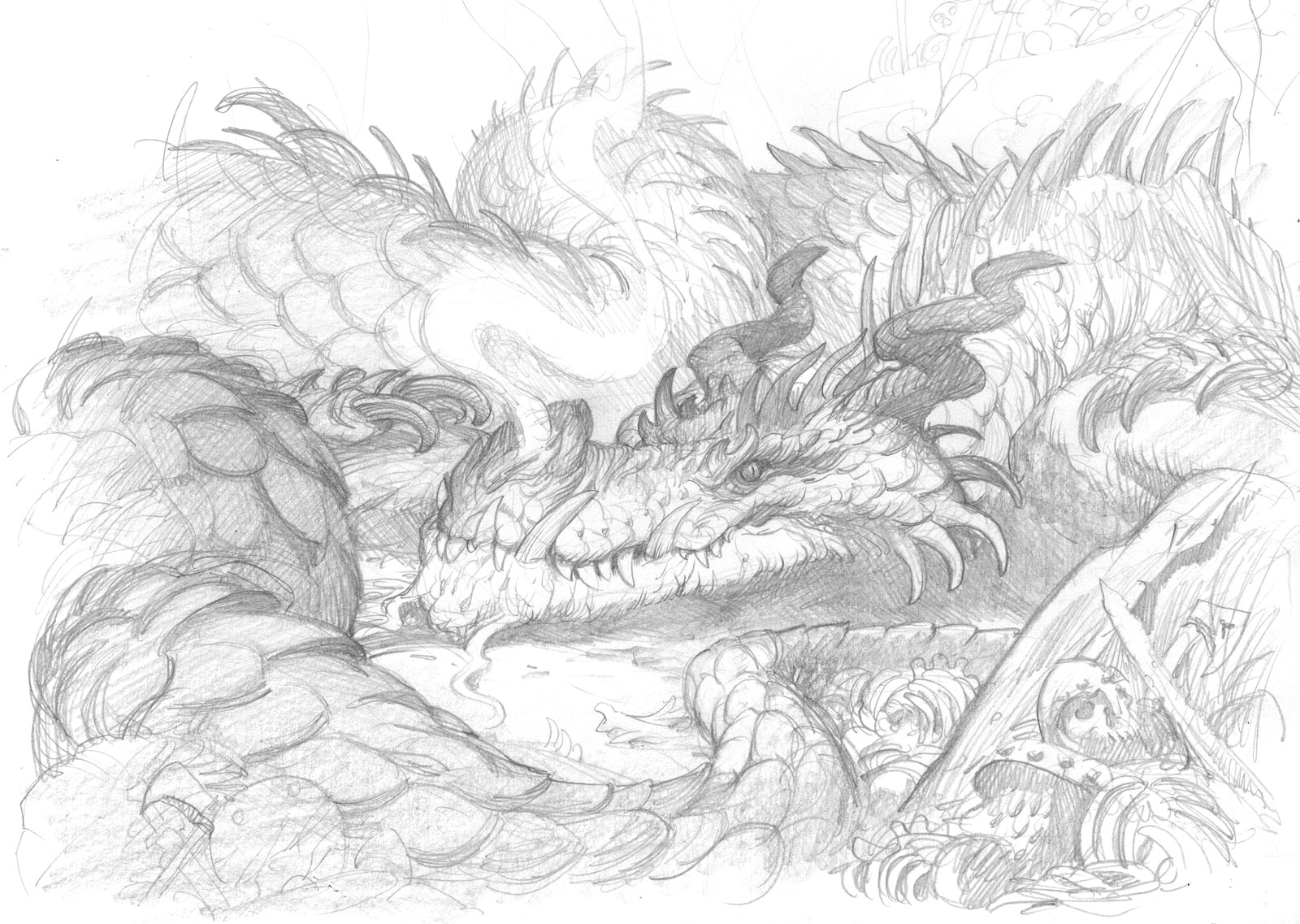
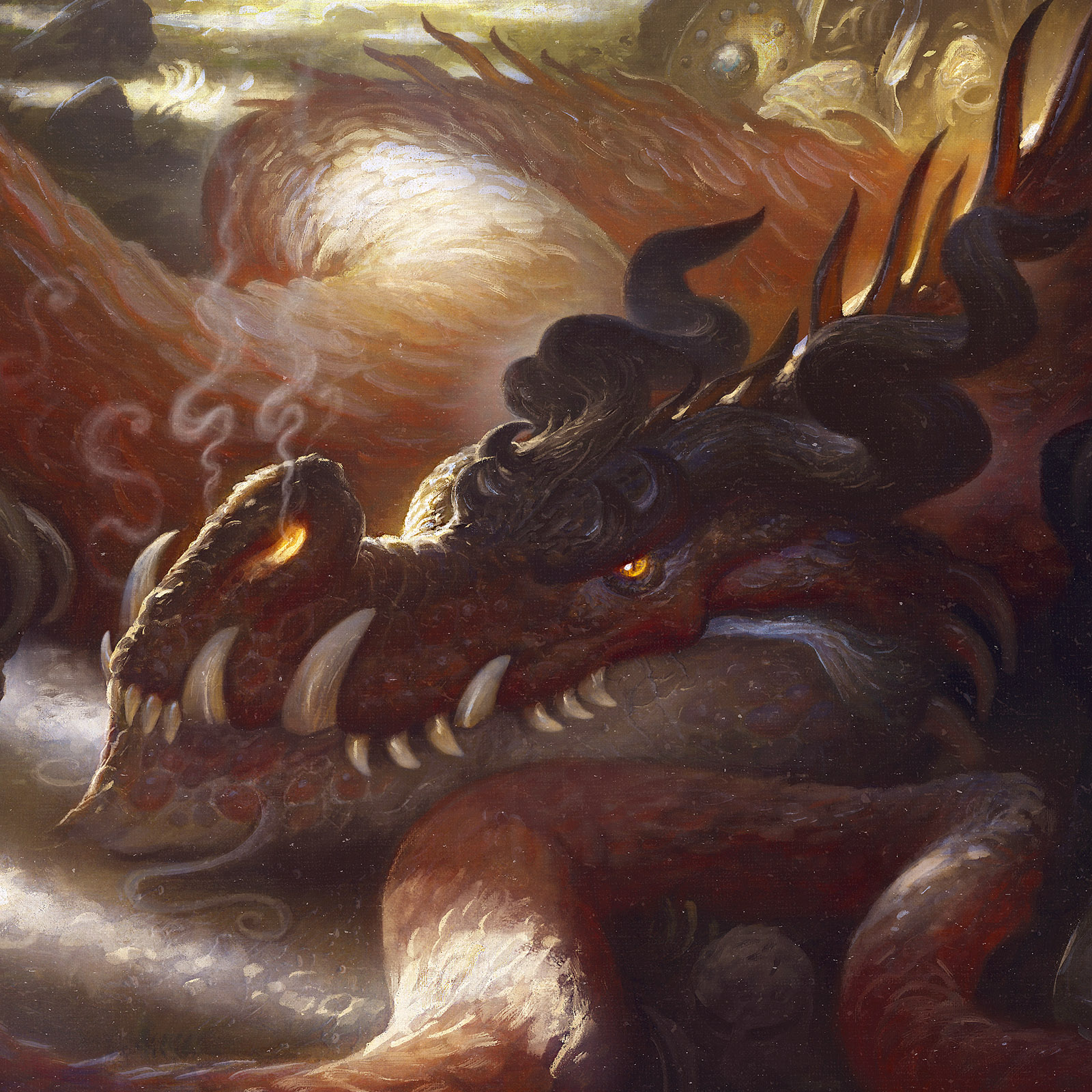
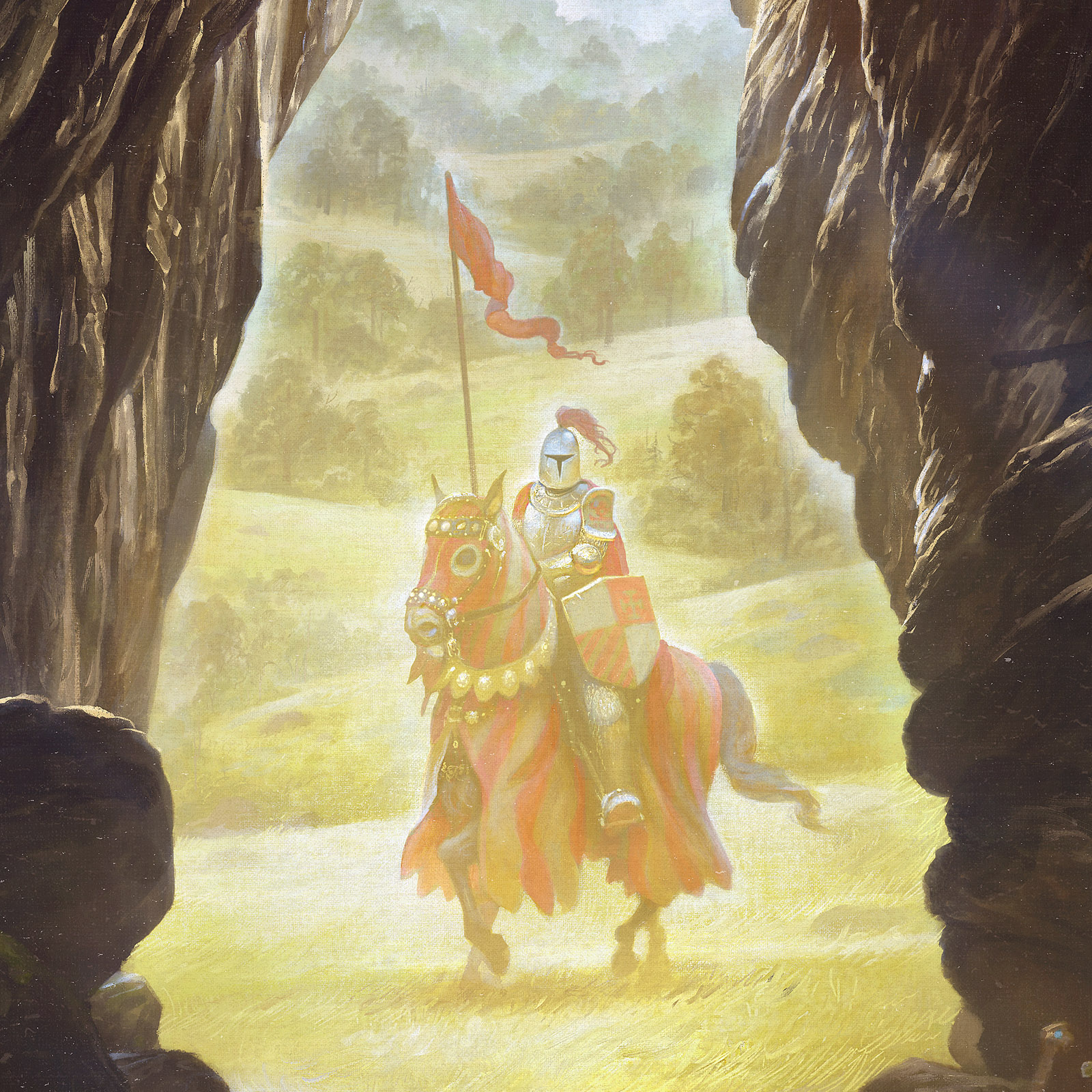
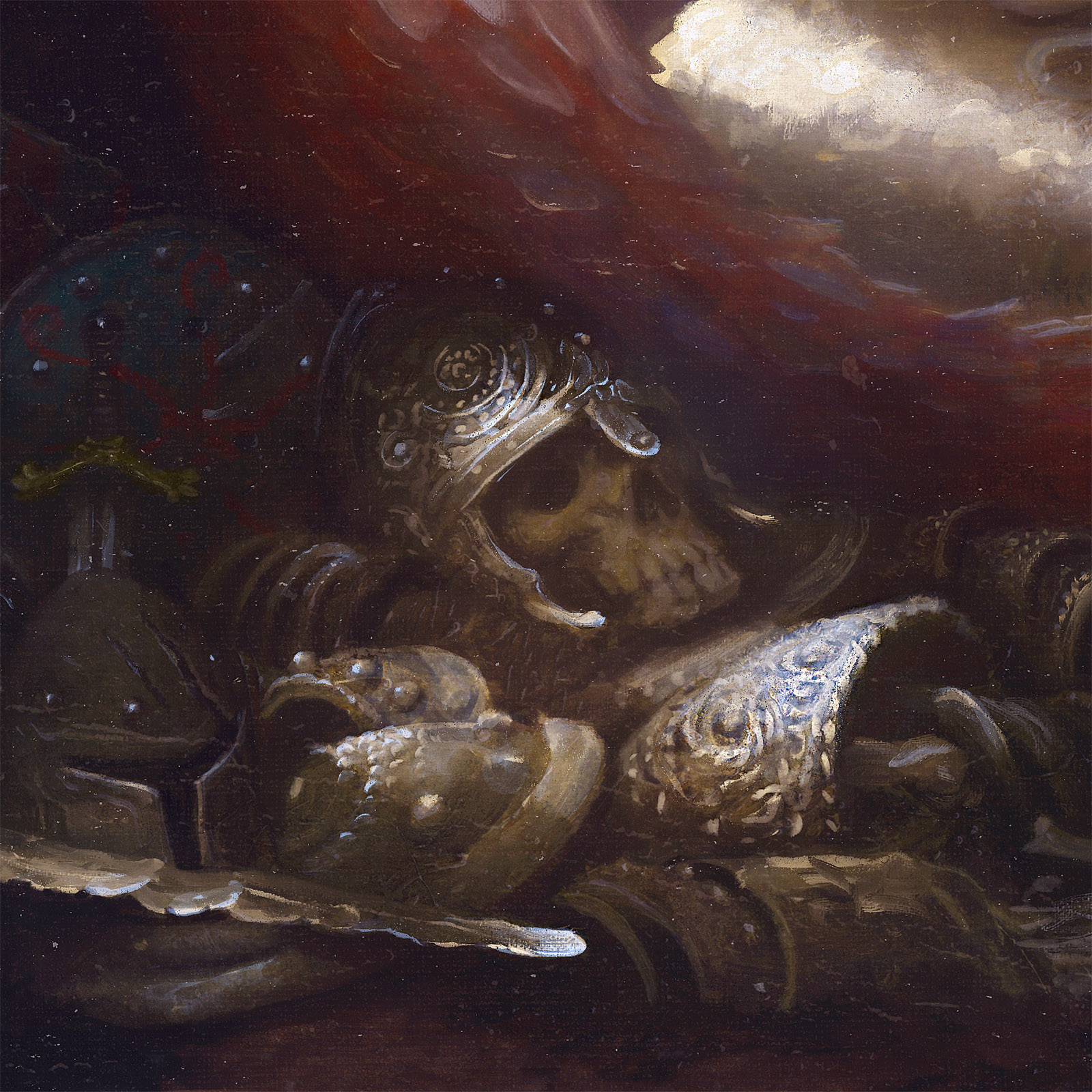
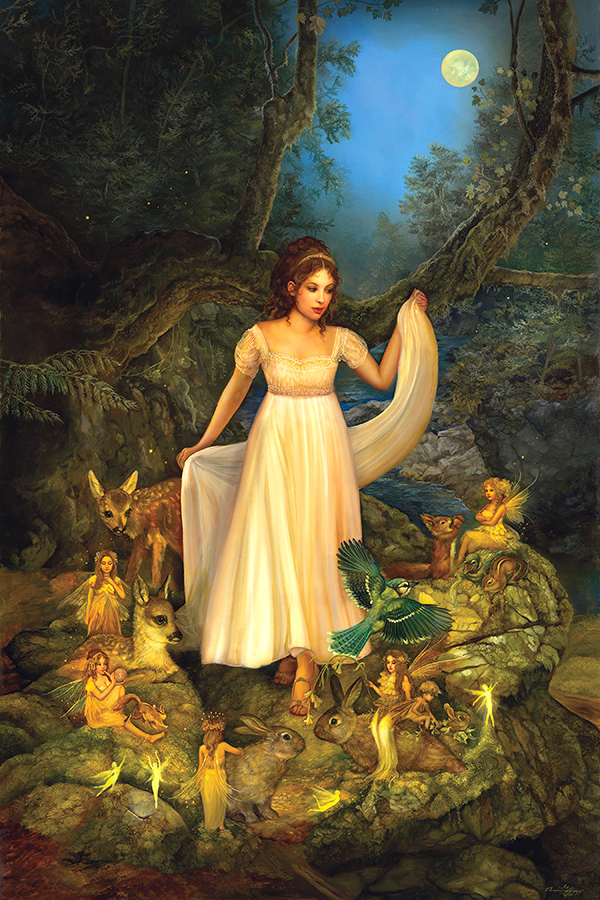
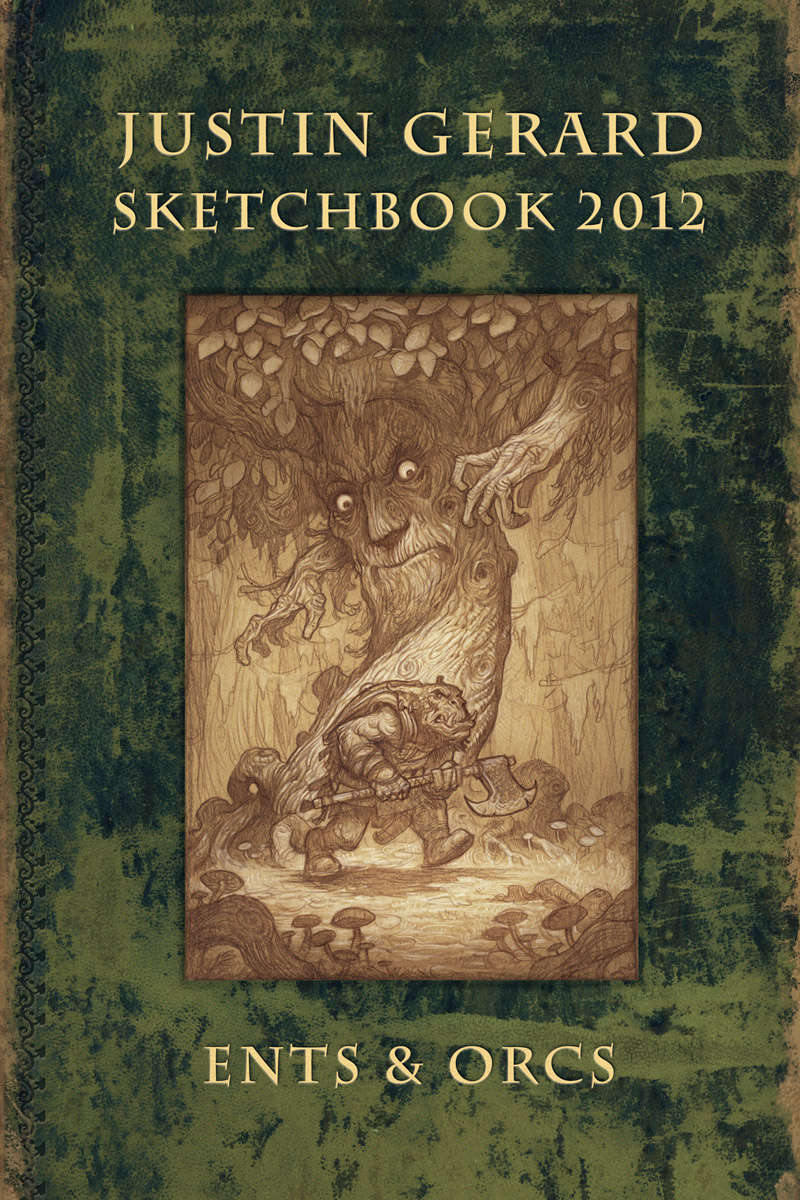
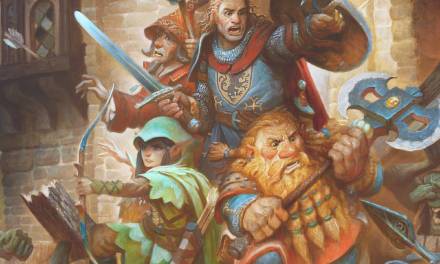
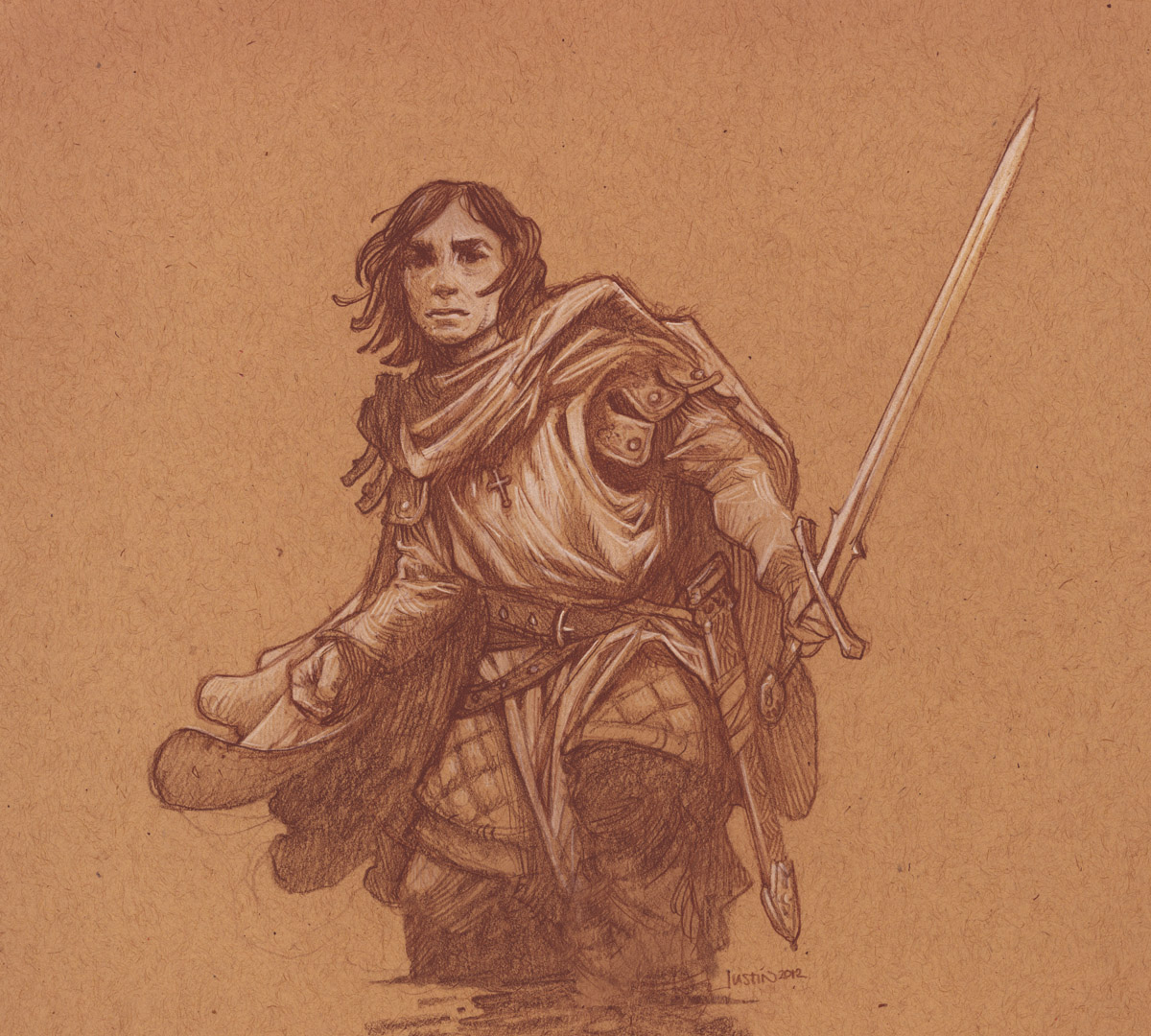
Since this accurately describes how I am feeling about my current painting I give this post 20 thumbs up.
Funny that you’d mention Leighton’s technique. I was just reading this before bed last night, and was thinking of trying this approach on my next painting.
Scroll down to chapter vi, Leighton’s painting technique. The best part is that this is from him and his contemporaries, not some art historian”s theories.
http://www.gutenberg.org/files/30262/30262-h/30262-h.htm
Hope that helps? Maybe you’re already aware of this.
Simply gorgeous Justin. Your best yet. the light is amazing and those teeth……..no rest for the wicked.
Great article and one outstanding painting!